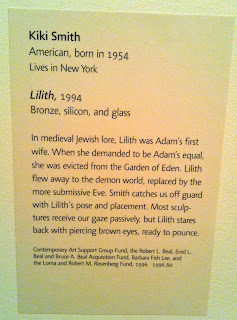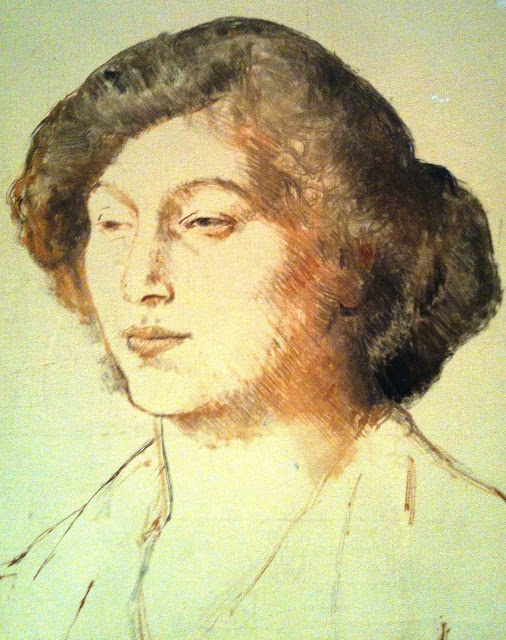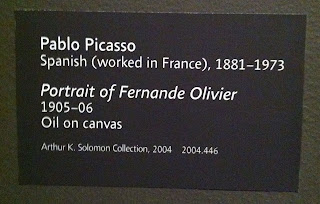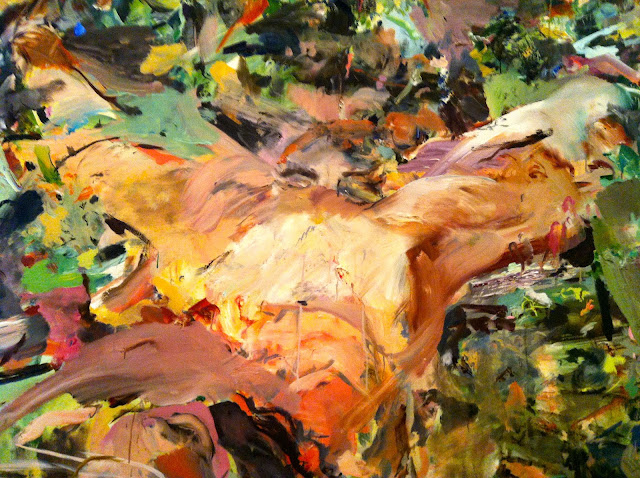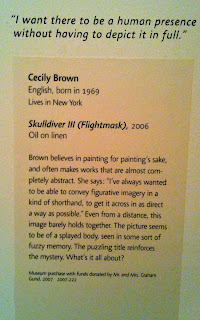Portrait of Fernande Oliver, Pablo Picasso, 1905-6
Her face is etched out in flowing lines that all follow the same path. Her hair is dark and given curls and volume in a lighter shade beneath this river of lines. Her eyes squint and look out, and she’s positioned in a three-quarter pose but her body’s only minimally sketched, bringing all the emphasis on this mostly empty canvas to the lined shadows cast by her face.
Skulldiver III (Flightmask), Cecily Brown, 2006
A large swath of pinky flesh-tones drips and sags as the canvas’s main attraction. The color scheme is what I love most. That’s all this painting really is anyway– random slashes and markings in colors that barely seem to go together in some places. The top layer of paint is raised, built up and sometimes too thick. Above the fleshy X is a closed pair of eyes, the eyelashes nearly lost in the color, but the thick dark eyebrows give them away.
 |
| Oil on linen. |
Two nudes (lovers), Oskar Kokoschka, 1913
 |
| Oil on canvas. This photo really doesn’t do it justice. Go see it at the MFA in Boston:) |
 |
| Sorry about the blur! The info behind it is actually really interesting. |
Standing this close, I can see every individual brushstroke. The top-most layer of paint still looks wet, splotchy and thick in places with the most color. The image shows a couple embracing– standing and holding each other as if they were practicing the tango naked. Their bodies are rough streaks of different shades of purple, the whole image a kind of group of these streaks that makes the picture seem blurry as if I was staring at it without my contacts. She holds his head delicately with her blue and purple fingers, but they both seem to be looking out of the frame, almost making an X of eye contact as their planes of vision cross each other and past us, the viewer. The matching greens and blues of their surroundings puts them in a jungle, or an ever-fertile make believe place, where the colors are much brighter and the details are much less important.
Evening (The Fall of Day), William Rimmer, 1869-70
A sun in the center of the sky hovers above a low, watery horizon. An angel made of pure muscle seems to leap from this horizon, his back toe just resting on the edge of the water, thrusting the rest of his body with heavy, feathery wings expanded, into the center of the composition.
His whole body is twitching with motion; his hand reaches up and back to the sun that falls behind him. All limbs are outstretched and exposed, his head shot back as well, leaving his jaw lit but his face in shadow, surrounded by a shroud of whispy, curly hair.
 |
| Crayon, oil, and graphite on canvas. At the MFA in Boston. |
The rest of the painting is left blank, allowing us to focus on the pose and outstretched motion of the angel, who is somehow being lit from the front even with the sun behind him. The dark weighty feathers of his wings are given details only where necessary.
His overly lined musculature is perfectly sketched in brown outline and shading before a light shade of orange was applied – the same orange added at the edges of his great wings for accent.




